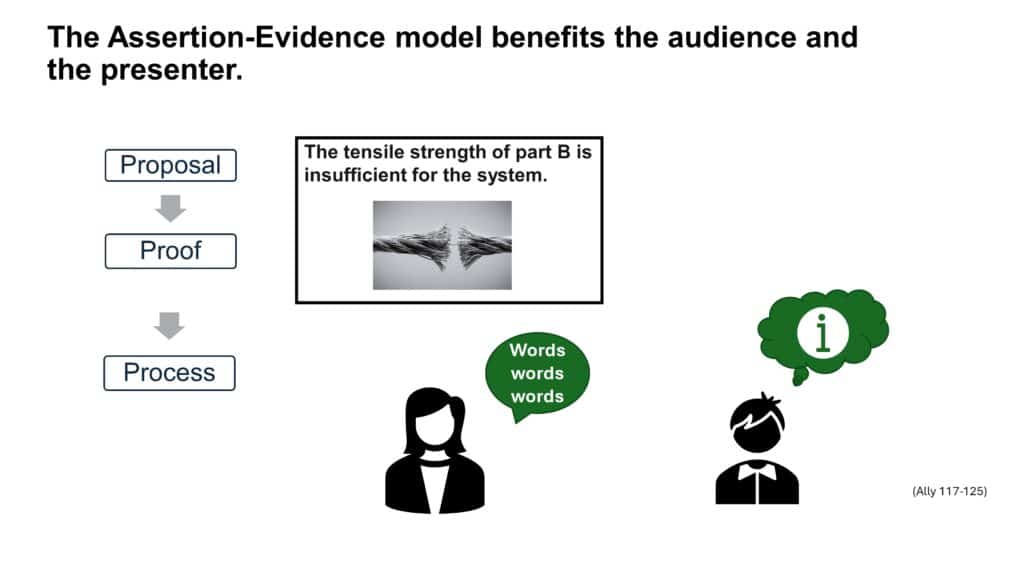Revolutionize Your Technical Presentations: Mastering the Assertion Evidence Model and the Six P’s Framework
Can the way you present technical information drastically impact decision-making? Absolutely. In our latest podcast episode, we explore transformative methods that can elevate your technical presentations to a whole new level. Instead of relying on lifeless bullet points, the assertion evidence model encourages you to make clear recommendations at the top of each slide, coupled with compelling graphical evidence. We also delve into the six P's—Perspective, Problem, Principle, Proposal, Proof, and Process—that serve as the backbone for structuring your presentation. These elements not only enhance learning but also facilitate more informed and productive discussions within your team.
If the thought of presenting to your team makes you anxious, we've got you covered. We'll share practical advice to boost your confidence and help you deliver your findings more effectively. By focusing on the value of your insights and using the six P's framework, you'll be well-equipped to engage your audience and convey crucial information. As we approach a busy season of deadlines and presentations, challenge yourself to adopt these methods for the benefit of your team.
The Assertion Evidence Model
The assertion evidence model is a game-changer for technical presentations. Instead of cluttering slides with bullet points, this model advocates for clear, complete sentences that state your main recommendation at the top of the slide. This recommendation is then supported by graphical evidence underneath. This method is particularly effective because it reduces cognitive overload, allowing your audience to focus on understanding your main points rather than getting lost in a sea of text. The model has been backed by numerous studies highlighting its efficacy in enhancing comprehension and retention.
The Six P's Framework
The Six P's framework—Perspective, Problem, Principle, Proposal, Proof, and Process—provides a structured approach to presenting technical information. The first three P's help set the stage: Perspective gives your audience context, Problem reiterates the issue you're addressing, and Principle outlines the criteria against which you're measuring success. The next three P's—Proposal, Proof, and Process—are repeated for each recommendation you present. Proposal is your main assertion, Proof is the graphical evidence that supports it, and Process explains how you arrived at your conclusion. This structured approach not only makes your presentation more engaging but also facilitates better decision-making within your team.
Overcoming Presentation Anxiety
Presenting technical information can be daunting, especially if you're anxious about speaking in front of your team. However, focusing on the value of your insights and using the six P's framework can boost your confidence. Remember, your team is there to learn from you, not to judge your presentation skills. By structuring your presentation effectively, you'll be able to convey crucial information more clearly, making the experience less stressful for you and more beneficial for your audience.
The Importance of Visual Aids
Visual aids are crucial in technical presentations. Studies have shown that people learn better from graphics and narration than from graphics, narration, and printed text combined. This is because the human brain can process visual information more efficiently, reducing cognitive overload. Therefore, including relevant visuals like photos, drawings, diagrams, and graphs can significantly enhance your audience's understanding and retention of the information. Think of your presentation as a documentary film, where visuals and narration work together to tell a compelling story.
Avoiding Common Pitfalls
One of the most common pitfalls in technical presentations is the overuse of bullet points. Bullet points often lead to sentence fragments and disconnected ideas, which can confuse your audience. Another issue is the redundancy effect, where the same information is presented in multiple forms (text, speech, graphics), causing cognitive overload. By using the assertion evidence model and the six P's framework, you can avoid these pitfalls and create a more effective and engaging presentation.
Interactive Presentations
Presentations offer the advantage of interaction and communication with your audience. Unlike reports, which are static, presentations allow you to gauge your audience's reactions and adjust your delivery accordingly. This interactive element can lead to more productive discussions and better decision-making. Don't be afraid to go off-script if a question or topic comes up that needs immediate attention. Your goal is to facilitate learning and discussion, not to stick rigidly to a pre-planned script.
Preparing for Presentations
Preparing for a presentation using the six P's framework can also benefit you as the presenter. The process of organizing your thoughts and structuring your presentation can lead to new insights and a deeper understanding of your own material. Additionally, being well-prepared can boost your confidence, making the actual presentation less stressful. Remember, your goal is to communicate your findings and facilitate informed decision-making within your team, not to deliver a flawless performance.
Insight to Action
In conclusion, the way you present technical information can significantly impact decision-making within your team. By adopting the assertion evidence model and the six P's framework, you can create presentations that are clear, engaging, and effective. These methods not only enhance learning but also make the presentation process less stressful for you. As we approach a busy season of deadlines and presentations, challenge yourself to adopt these methods for the benefit of your team. For more learning techniques, don't forget to check out qualityduringdesign.com.
Cited works
Ally, Michael. The Craft of Scientific Presentations, Critical Steps to Succeed and Critical Errors to Avoid, 2nd. ed. Springer Science + Business Media, 2013.
Atkinson, Cliff. Beyond Bullet Points: Using PowerPoint to Tell a Compelling Story that Gets Results. Pearson Education, 2018.
Mayer, Richard E. Multi-Media Learning, 2nd ed. Cambridge University Press, 2009.
Other podcast episodes you might like
Crucial Conversations in Engineering, with Shere Tuckey (A Chat with Cross-Functional Experts)





